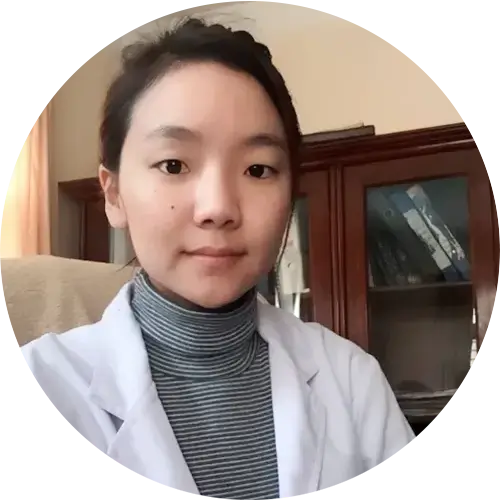Common Winter Infections: How to Know When Treatment Is Required

Medically Reviewed and Updated by Dr. Sony Sherpa (MBBS) - October 16, 2023
With a slight chill in the air, it is the perfect time of year to indulge in rich foods, vacations, and festivals. While we look forward to getting dressed up in our winter finery, the season does have a flipside in the form of diseases and health problems.
Why are we more vulnerable to diseases when the temperature drops? Being cooped up inside for an extended time makes it easier for viruses to spread from person to person, resulting in colds, flu, and other respiratory problems.
Illnesses are also more common in the winter because when a sick person coughs or sneezes, contaminated respiratory droplets spread more easily in dry air. Furthermore, during the holidays, people prefer to gather inside, making it easier for infections to travel from person to person.
Let's look at some of winter's most common seasonal infections and how to know when to treat them.
Common Cold
The common cold is often considered part and parcel of the colder months as it is prevalent during that time. Furthermore, since it is quite common, we often dismiss it as a natural part of the changing seasons.
A common cold can cause a sore throat, headache, chest congestion, runny nose, sneezing, and other symptoms. The common cold, affecting both adults and children, is expected to go away in a few days and requires no serious medical intervention.
A cold has no treatment and must be allowed to run its course, which takes seven to ten days. The most important thing you can do is look after yourself while your body heals. Rest, drinking enough fluids, humidifying the air, and using saline nasal rinses are all excellent ways to take care of yourself.
When to treat?
A cold can lead to other conditions that might cause serious health concerns in some people, particularly those with compromised immune systems. Asthma, ear infections, and sinus infections are among the problems caused by secondary infections.
So, if you have a cold with a high fever, sinus pain, ear pain, chest pain, extremely swollen glands, an asthma flare-up or difficulty breathing, a mucus-producing cough, or symptoms that persist for more than 10 days or worsen, contact your healthcare provider. You may require additional treatment with antibiotics.
If your child has a common cold, take them to the nearby emergency department or consult a healthcare practitioner if they:
- Stop eating.
- Develop a high temperature
- Have ear or stomach pain
- Are more sleepy than usual
- Are throwing up
- Cry a little more than usual
- Have difficulty breathing
- Start wheezing
Influenza (Flu)
Influenza is a droplet infection that causes more severe symptoms than a common cold. Flu season typically lasts from fall to March, making annual vaccinations for everyone over the age of six months essential in combating this common winter infection.
An influenza infection usually clears up in 7-10 days. Symptoms of the flu include fever, chest congestion, cough, muscle pains, chills, and exhaustion, which can develop rapidly. Although vomiting and diarrhea can occur in youngsters, they are not common symptoms of flu in adults.
Rest and self-care can help those who are generally healthy to recover in five to seven days. However, if a person is at high risk of flu-related complications, the flu is more likely to cause additional health problems.
When to treat?
The people with conditions listed below should contact their healthcare provider as soon as they notice flu symptoms since they are at high risk of becoming very sick from the flu:
- Parents with a child under the age of two
- Is pregnant or in the final two weeks of pregnancy
- Has a neuromuscular or neurologic disorder, asthma or chronic lung diseases, heart disease, kidney or liver disease, a blood disorder, endocrine or metabolic disorders, a weakened immune system due to disease or medication, or is severely obese
- Is 65 years or older
In infants and children, seek medical attention right away if they exhibit the following symptoms:
- Skin color is bluish
- Breathing too quickly or having trouble breathing
- No tears when crying or not urinating
- Not drinking enough fluids
- Being so irritated that the child does not want to be held
- Severe or repeated episodes of vomiting
- Not waking up or interacting
- Fever accompanied by a rash
- Confusion
- Dizziness that comes on suddenly
- Pain or pressure in the chest or abdomen
- Flu-like symptoms that get better but recur with fever and a severe cough
In adults, seek urgent medical attention if you experience any of the following symptoms:
- Pain or pressure in the chest or abdomen
- Breathing difficulties or shortness of breath
- Confusion
- Dizziness that comes on suddenly
- Flu-like symptoms that get better but return with fever and a severe cough
- Severe or repeated episodes of vomiting
- Severe dehydration
Norovirus
The norovirus is a contagious infection that can affect people of all ages at any time of year. However, it is more common in the winter. The virus is alternatively known as the winter vomiting bug, as it causes diarrhea and vomiting.
Symptoms of Norovirus include diarrhea, nausea, vomiting, and stomach pain. You may also get a fever, headache, and body aches. Symptoms often emerge 12 to 48 hours after virus contact and last one to three days.
Norovirus has no known cure. The treatment of the infection focuses on relieving symptoms, which should last one to three days.
You can alleviate your symptoms by:
- Getting plenty of rest
- Drinking plenty of fluids, especially electrolyte-containing ones
- Consuming soft, bland foods
When to treat?
Vomiting and diarrhea can be extremely dehydrating for certain people, particularly young children, elderly adults, and people with existing medical issues, and may necessitate medical attention. Seek medical assistance if your diarrhea persists for more than a few days. Also, contact your doctor if you have severe vomiting, stomach pain, bloody stools, or dehydration.
Respiratory Syncytial Virus (RSV)
An RSV infection is caused by a common respiratory virus (Respiratory Syncytial Virus) and typically produces mild symptoms comparable to a cold. However, RSV can cause inflammation of the small airways in the lung (bronchiolitis) and lung infection (pneumonia) in children under one, as well as respiratory illness in older individuals. It can be fatal in the most severe cases.
A runny nose, sneezing, coughing, fever, wheezing, and a decrease in appetite are common symptoms, but they usually develop in stages rather than all at once. Furthermore, young infants may exhibit irritation, decreased activity, and breathing difficulties.
Over-the-counter fever reducers and pain medications, such as acetaminophen or ibuprofen, can treat fever and pain. People infected with RSV should consume enough water to avoid dehydration. Stuffiness can be relieved by nasal saline drops and suctioning or blowing the nose.
When to treat?
Premature newborns, young children with congenital heart disease, chronic lung disease, or weakened immune systems, older adults with heart or lung disease, and adults with compromised immune systems are at the highest risk.
Antibiotics may be required if you develop a complication such as bacterial pneumonia. A doctor might prescribe an antiviral medication if your immune system is compromised. A hospital stay may be required if the infection is severe.
Hospital treatments may include:
- Humidified oxygen
- Intravenous (IV) fluids
- In rare conditions, a breathing machine (mechanical ventilation) is used
Strep Throat
A sore throat can be caused by anything from bacteria and viruses to postnasal drip and irritating allergens. Still, one of the worst is caused by group A Streptococcus (strep) bacteria, which causes an infection of the throat and tonsils and makes swallowing uncomfortable.
Strep throat is characterized by the following symptoms: fever, a sore throat with pain when swallowing, red and swollen tonsils, small red spots on the roof of the mouth, white patches or streaks of pus, and swollen lymph nodes. Airborne droplets can be spread by coughing, sneezing, touching an infected surface, or direct contact with a sick person. Additional symptoms may include headaches, stomach pain, nausea, vomiting, and a scarlet fever rash.
When to treat?
Seek treatment for strep throat if you have the following:
- A fever
- A sore throat that persists longer than 48 hours
- A sore throat with swollen and tender lymph glands
- Problems with swallowing or breathing
- A sore throat accompanied by a rash
- If strep has been diagnosed, with no improvement after taking antibiotics for 48 hours
Tips for Minimizing or Preventing Spread
- Get a flu shot every year.
- Wash your hands frequently with soap and water.
- Avoid touching your eyes, nose, and mouth.
- Stay home when you are sick.
- Clean and disinfect frequently touched surfaces.
- Prioritize adequate sleep and consume a healthy diet.
Conclusion
As winter approaches, the sniffles, sneezes, and shivers will likely impact more people worldwide. While it may be tempting to live in a bubble all winter, you won't be able to avoid viruses because they are widely prevalent. Knowing the signs of common winter infections such as the common cold, flu, stomach bug, RSV, and strep allows you to determine when to seek treatment.
Search for some of the best Ear, Nose Throat (ENT) worldwide, please the Mya Care search engine
To search for the best doctors and healthcare providers worldwide, please use the Mya Care search engine.
The Mya Care Editorial Team comprises medical doctors and qualified professionals with a background in healthcare, dedicated to delivering trustworthy, evidence-based health content.
Our team draws on authoritative sources, including systematic reviews published in top-tier medical journals, the latest academic and professional books by renowned experts, and official guidelines from authoritative global health organizations. This rigorous process ensures every article reflects current medical standards and is regularly updated to include the latest healthcare insights.

Dr. Sony Sherpa completed her MBBS at Guangzhou Medical University, China. She is a resident doctor, researcher, and medical writer who believes in the importance of accessible, quality healthcare for everyone. Her work in the healthcare field is focused on improving the well-being of individuals and communities, ensuring they receive the necessary care and support for a healthy and fulfilling life.
References:
Featured Blogs



